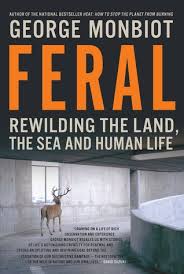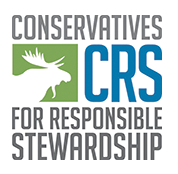Monbiot’s Feral: A Tad Too Wild
 Feral: Rewilding the Land, the Sea, and Human Life. By George Monbiot (Chicago: University of Chicago Press, 2014), xxi + 319 pp. $25.00 cloth.
Feral: Rewilding the Land, the Sea, and Human Life. By George Monbiot (Chicago: University of Chicago Press, 2014), xxi + 319 pp. $25.00 cloth.
Frederic Edwin Church’s El Rio de Luz (1877), on display at the National Gallery of Art in Washington, has long been thought to exemplify the appearance and spirit of a natural world untouched by human impression. The filtered sunlight gently strikes the center of the tropical lagoon, radiating outward past moss, ferns, and more extended branches toward an interior forest preserved in mild darkness. It appears to be an attribute of human nature to revere, or even to crave such primordial removal from the modern condition; but the actual pursuit of it, amid great personal hazard and social cost, generally belongs to the endangered species of activist-explorers like George Monbiot.
Feral: Rewilding the Land, the Sea, and Human Life is best described as an academically informed, personal manifesto calling for the active restoration of a more diverse, vibrant, and colorful ecology. “The main aim of rewilding,” Monbiot writes, “is to restore to the greatest extent possible ecology’s dynamic interactions…enhancing the number of opportunities for animals, plants, and other creatures to feed on each other” (84).
The first major aspect of this program is to deliberately reintroduce exotic land animals, which are generally far less threatening to human beings than is often imagined. Wolves for instance, despite their ravenous reputation, in actuality hardly ever attack human beings; and Monbiot advocates the deliberate return of these falsely accused animals because they “are fascinating, and because they help to reintroduce the complexity and tropic diversity in which our ecosystems are lacking” (117). The beaver and the European lynx might also be considered, and major efforts, which Monbiot witnessed firsthand (96-100), are already underway by the Trees for Life organization to rewild the Caledonian forest in the Scottish Highlands (http://treesforlife.org.uk), an auspicious beginning in part because of highly improbable human encroachment.
The author appears to offer two other main prescriptions for rewilding the land. First, the grazing of sheep should be reduced as much as possible, given that the husbandry of this preferred species, contrary to its innocuous reputation, has in fact wrought untold environmental devastation in Great Britain (chapter 9). Second, the outrageous system of European farm subsidies must end, given that they institutionalize the preferences of a tiny minority of the rural population.
Monbiot would also rewild the seas and human communities, though he devotes less discussion to these other two. His main argument concerning the former relates to the great environmental devastation of commercial fishing. “It is impossible,” he writes, “for the delicate animals destroyed when nets, beams, rakes, and chains were first dragged over them to re-establish themselves…[Thus] fishing reduces complex, three-dimensional habitats to featureless plains” (247). Especially sadistic is scallop dredging, a procedure by which enormous and imperturbable metal teeth are dragged along the seafloor behind the fishing boat, devastating everything in their path (253). The main solution is to enact marine reserves where such activities would be illegal.
Monbiot argues, finally, that human beings need to be rewilded through more dynamic encounters with, if not always the wilderness, than at least the outdoors in general. “Children, confined to their homes, become estranged from each other and from nature. Obesity, rickets, asthma, myopia, the decline of heart and lung function all appear to be associated with the sedentary indoor life” (169). The implied thesis is that the more the human species interacts with others on this planet, the greater is it enriched and nourished.
Monbiot is primarily a journalist, and Feral is thus primarily a personal as opposed to an academic work, with long descriptions of his international travels. The greatest weaknesses of his volume derive in my view from a questionable sociology, in which doubtful conclusions are frequently drawn concerning how and why we as humans interact with the wild.
The entire eleventh chapter, “The Beast Within (Or How not to Rewild),” seems completely irrelevant to the composition, and could be eliminated entirely. To what purpose are we informed that the Slovene ecology has benefited from the totalitarian destruction of Slovene society, or that John Aspinall—patron of the vengeful Toryism of the Clermont Club—was a social Darwinist bigot?
More importantly, Monbiot condemns the English baronage as those primarily responsible for the ecological backwardness of Britain (107), even though one could just as plausibly argue that the great landlords have preserved the rivers, woodlands, landscapes, and wildlife for future generations, at the very least from the horrors of over-development and urban sprawl.
And I do not accept at all his repeated suggestion (57-60, 139) that big cat and other fictitious exotic animal sightings in Britain and elsewhere “hint at an unexpressed wish for lives wilder and fiercer than those we now lead,” (60). This is because pre-Industrial, pre-Westphalian people if anything glimpsed infinitely more irrational monsters in the shadows than we do, especially the ancient Germanic races. Dante and Aquinas, Luther and Descartes inhabited a far more terrifying universe of supernatural phenomena, and the potent visions of the monstrous and of the demonic characteristic of their ages had nothing to do with “lives [that] have become tamer and more predictable” (60), as Monbiot ignorantly suggests.
This brings us lastly to the man himself. A focused review should generally avoid ad hominem observations, but Monbiot looms so large as a character in Feral that we must consider the traveler and activist as he chooses to reveal himself. Monbiot has been starved, stung, stabbed, sickened and much else besides throughout a long career of investigative environmental journalism, though he has generally done more writing than adventuring since being headquartered at the Guardian beginning in 1996.
His politics appear perhaps what one might expect: highly revisionist, anti-establishment, and atheist (33), with regular denunciations of the influence of major corporations as well as, more specifically, chartering an organization (http://www.arrestblair.org/) to compensate people who attempt to perform—subject to a few specifications—citizen’s arrests of former British Prime Minister Tony Blair, complete with continual updates of his busy schedule.
Do such things also belong to the “rewilding” of human life?
MARK R. ROYCE
CRS Board Member
© 2015 Mark. R. Royce
All book reviews reflect the opinion of the author(s) and in no way represent an official position or endorsement by Conservatives for Responsible Stewardship

